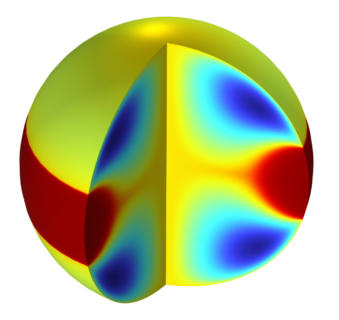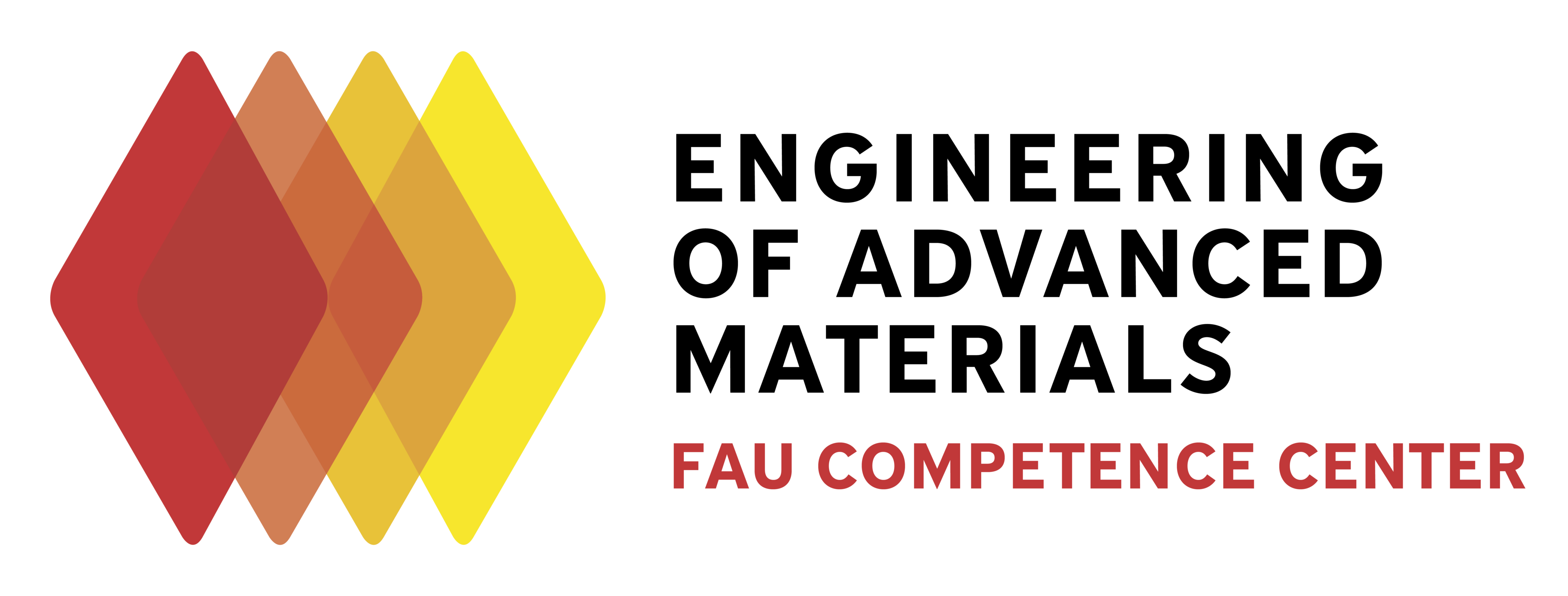August 2024

Acoustic levitation makes it possible to immobilize small objects without physical contact. Instead, a standing sound wave is used to counteract gravity. Researchers at FAU applied acoustic levitation to perform single droplet drying experiments. By that, the full drying process of a single colloidal droplet could be observed and analyzed by means of advanced measuring instruments. However, even if acoustic levitation requires no physical contact, it still affects the heat and mass transfer during the drying process. More precisely, the droplet is deformed by the acoustic radiation pressure and the acoustic streaming leads to toroidal fluid circulations.
Mathematical modeling and direct numerical simulations were performed to investigate the aforementioned secondary effects of the acoustic levitation on the drying process. The figure shows how the acoustic streaming affects the distribution of the colloids inside the levitated droplet. The red area indicates where the colloids are more concentrated. It can be observed that the acoustic streaming accumulates the colloids near the droplet’s equator.
Recent publications related to the figure:
M. Doß and E. Bänsch, Numerical study of single droplet drying in an acoustic levitator before the critical point of time, Chemical Engineering Science, vol. 248, p. 117149, 2022. DOI:
10.1016/j.ces.2021.117149
M. Doß, N. Ray, and E. Bänsch, Modeling and simulation of single droplet drying in an acoustic levitator, Drying Technology, vol. 41, no. 13, pp. 2088-2104, 2023. DOI: 10.1080/07373937.2023.2218162
Eberhard Bänsch, Martin Doß, Carsten Gräser, Nadja Ray, Well-posedness of an evaporation model for a spherical droplet exposed to an air flow, Interfaces and Free Boundaries, 2024. DOI: 10.4171/IFB/524
Research group web site:
https://www.math.fau.de/angewandte-mathematik-3/
